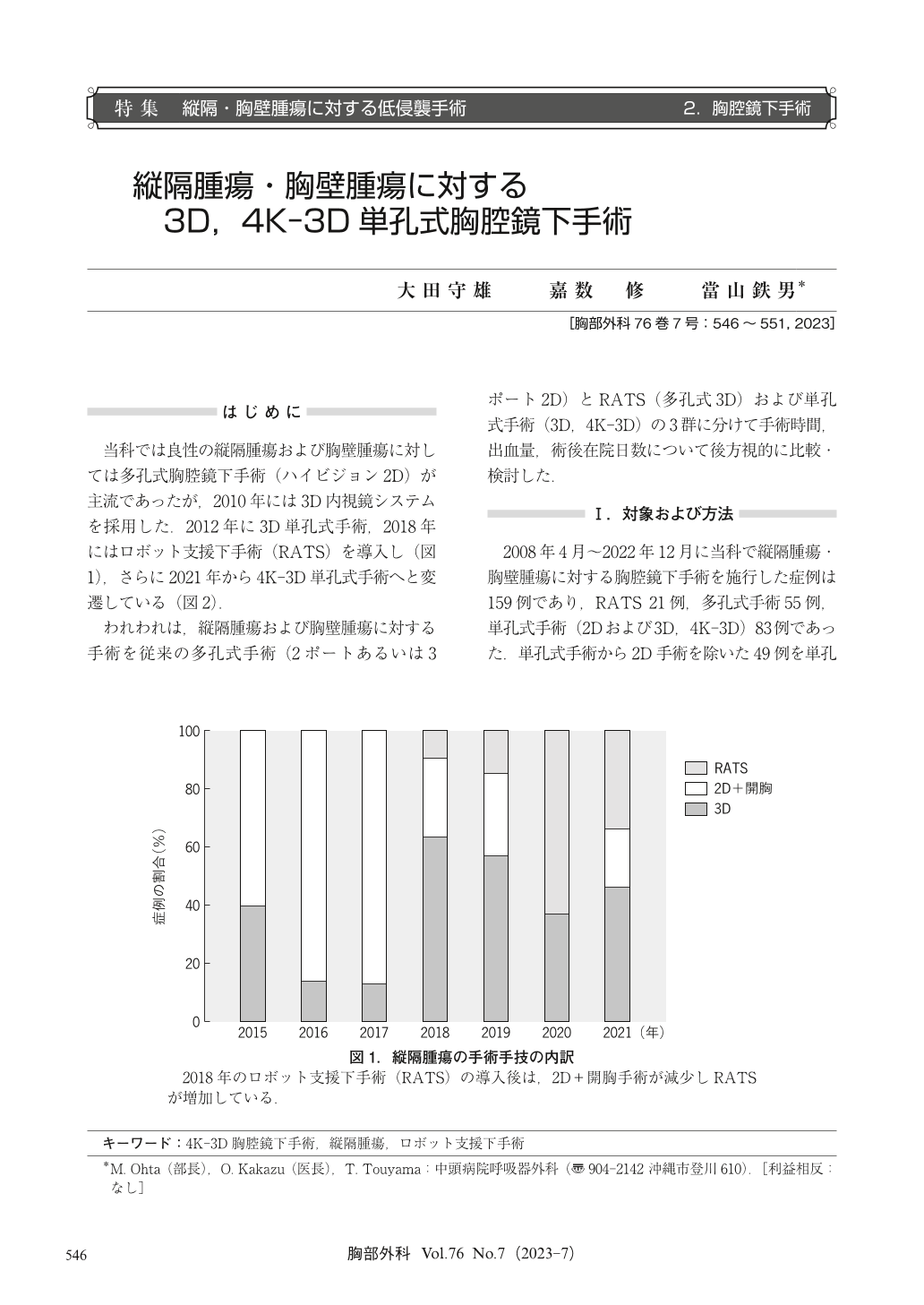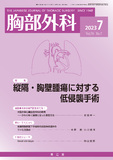Japanese
English
- 有料閲覧
- Abstract 文献概要
- 1ページ目 Look Inside
- 参考文献 Reference
当科では良性の縦隔腫瘍および胸壁腫瘍に対しては多孔式胸腔鏡下手術(ハイビジョン2D)が主流であったが,2010年には3D内視鏡システムを採用した.2012年に3D単孔式手術,2018年にはロボット支援下手術(RATS)を導入し(図1),さらに2021年から4K-3D単孔式手術へと変遷している(図2).
Uniportal video-assisted thoracoscopic surgery (VATS) lobectomy has recently been used with increasing frequency by thoracoscopic surgeons, even in Japan. However, few reports have previously described uniportal VATS for mediastinal and chest wall disease. From April 2008 to December 2022, 159 patients were treated for mediastinal and chest wall disease. We divided the patients into three groups based on the type of surgery:robot-assisted thoracoscopic surgery (RATS), n=21;multi-portal surgery (using a two-dimensional [2D] system), n=55;and uniportal surgery, n=83. Of the 83 cases in the uniportal surgery group, 49 underwent surgery with a three-dimensional (3D) or 4K-3D system. The operation duration, blood loss, and postoperative stay duration were compared among the groups. A p-value of <0.05 was considered statistically significant. The operation duration, intraoperative blood loss, and postoperative stay duration were significantly lower in the uniportal group (3D, 4K-3D) than in the multi-portal group (2D), with respective p-values of 0.001, 0.034, and 0.005. The RATS group showed a reduced blood loss trend, but not to a significant degree. In conclusion, our findings suggest that a 3D system can optimize surgical performance compared to a 2D system. In particular, using a 4K-3D system with high-definition imaging and stereoscopic vision enables surgeons to perform less-invasive thoracoscopic surgery than would otherwise be feasible.

© Nankodo Co., Ltd., 2023


